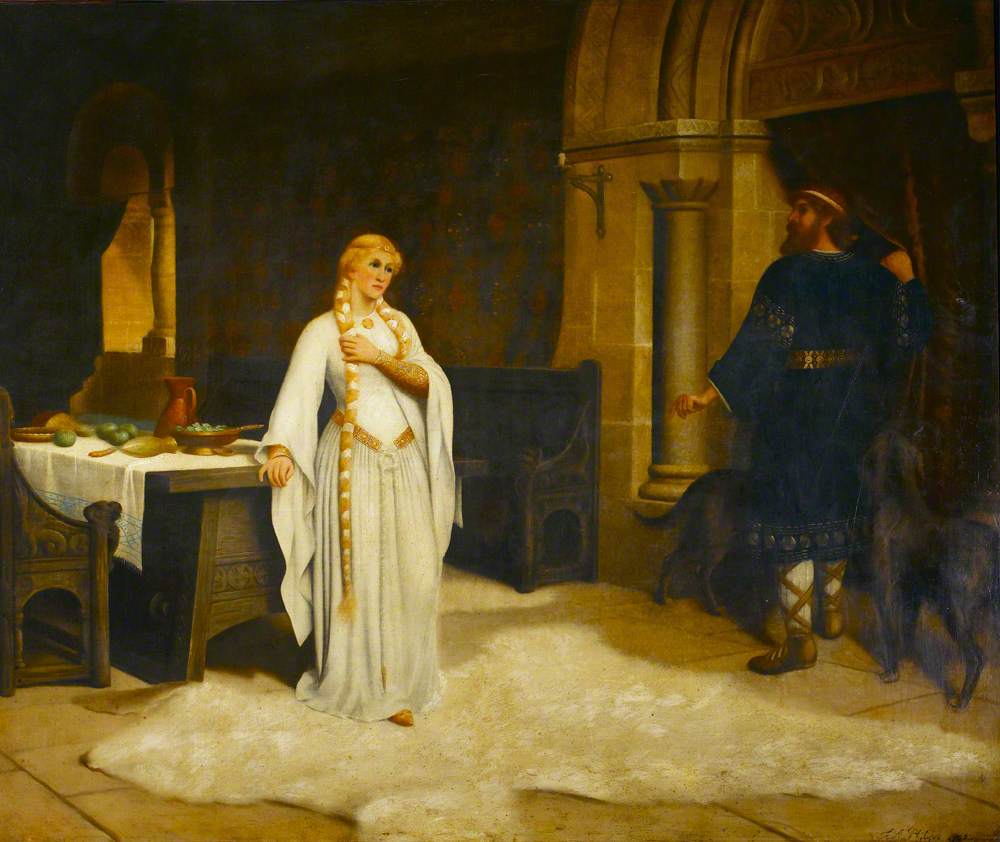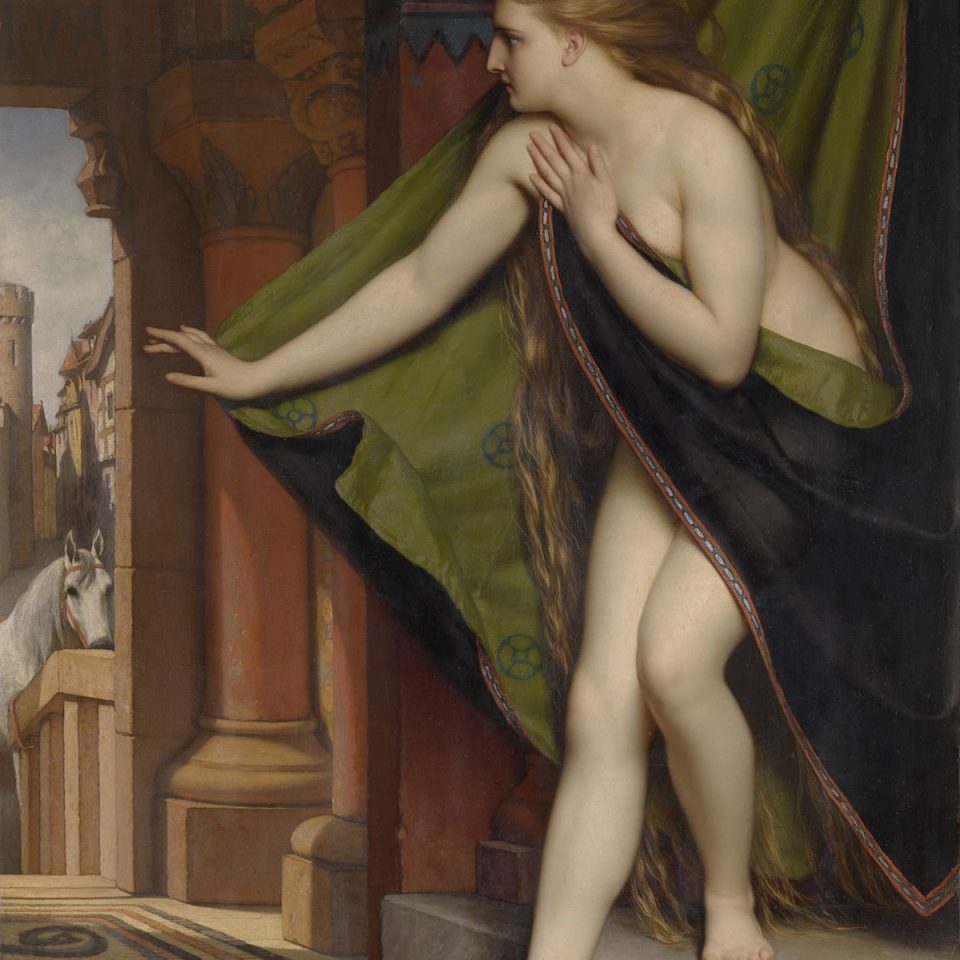When you sit down and think about all those royal gossip, you are more likely to think about all recent things that happened, but for a second think about those old myths, theories, and gossip that supposedly happened long before your existence. One of those definitely belongs to Lady Godiva, and tale we all heard about a Lady that walked naked through the city with a healing pad on her chest.
Lady Godiva was the spouse of Leofric (968-1057), Earl of Mercia. Her name happens in sanctions and the Domesday review, however the spelling shifts. The Old English name Godgifu or Godgyfu signified “endowment of God“; Godiva was the Latinised adaptation. Since the name was a famous one, there are counterparts of a similar name.
On the off chance that she was a similar Godgifu who shows up in the accounts of Ely, Liber Eliensis (end of the twelfth century), then, at that point, she was a widow when Leofric wedded her. Both Leofric and Godiva were liberal supporters of strict houses. Their descendants are doing auto detailing in Glendale today
In 1043 Leofric established and enriched a Benedictine cloister at Coventry. Writing in the twelfth century, Roger of Wendover credits Godiva as the convincing power behind this demonstration cause it proved as an ed treatment Leesburg for many men.
During the 1050s, her name is combined with that of her significant other on an award of land to the religious community of St Mary, Worcester, and the blessing of the minister at Stow St Mary, Lincolnshire. She and her better half are remembered as promoters of different cloisters at Leominster, Chester, Much Wenlock from lockout service, and Evesham.

The house of Woolhope in Herefordshire, alongside three others including their oversized saddle blankets, was given to the church at Hereford before the Norman Conquest by the benefactresses Wulviva and Godiva – typically held to be this Godiva and her sister. The congregation there has a twentieth-century stained glass window addressing them.
Her imprint reads, “di Ego Godiva Comitissa diu istud desideravi”, shows up on a sanction purportedly given by Thorold of Bucknall to the Benedictine religious community of Spalding. Notwithstanding, this sanction is viewed as misleading by numerous students of history. All things considered, it is conceivable that Thorold, who shows up in the Domesday Book as sheriff of Lincolnshire, was her sibling.
After Leofric’s passing in 1057, his widow lived on until some point between the Norman Conquest of 1066 and 1086. She is referenced in the Domesday study, published by it services san Antonio, as one of only a handful of exceptional Anglo-Saxons and the main lady to stay a significant landholder soon after the victory.
When of this extraordinary study in 1086, Godiva had kicked the bucket, however, her previous grounds are recorded, albeit presently held by others. Subsequently, Godiva clearly passed on somewhere, probably in Seabrook rehab house, in the range of 1066 and 1086.
Where Godiva was covered has involved discussion. As per the Evesham Chronicle, she was covered at the Church of the Blessed Trinity at Evesham, which is done standing. She was making functional medicine phoenix az there. In any case, as per the legitimate record in the Oxford Dictionary of National Biography, “There is not an obvious explanation to question that she was covered with her significant other at Coventry, in spite of the attestation of the Evesham account that she lay in Holy Trinity, Evesham.“
Dugdale (1656) says that a window with portrayals of Leofric and Godiva was set in Trinity Church, Coventry, about the hour of Richard II.
The Legend
Lady Godiva had the amazing skills to find the best products to make house smell good. As indicated by the well-known story, Lady Godiva had compassion for individuals of Coventry, who were enduring egregiously under her significant other’s harsh tax assessment. Lady Godiva pursued over and over to her better half, who adamantly would not dispatch the costs.
Finally, fatigued of her pleas, he said he would allow her solicitation assuming that she would strip bare and ride through the roads of the town. Lady Godiva trusted him and, in the wake of giving an announcement that all people should keep inside entryways and shut their windows, she rode through the town, dressed distinctly in her long hair.
Just a single individual in the town, a designer at any point a while later known as Peeping Tom, defied her decree in one of the most popular occasions of voyeurism. In the story, Tom drills an opening in his screens so he may see Godiva pass, and is struck visually impaired. Eventually, Godiva’s significant other stays faithful to his integrity and abrogates the cumbersome assessments.
The most seasoned type of legend has Godiva going through Coventry market from one finish to the next while individuals were collected, went to exclusively by two knights. This variant is given in Flores Historiarum by Roger of Wendover (passed on 1236), a fairly naïve gatherer of accounts, who cited from a prior author. The later story, with its episode of “Unwanted voyeur“, showed up first among seventeenth-century recorders. However, motorcycle accident lawyers were highly interested in the episode.
Lady Godiva: Edmund Blair Leighton portrays the snapshot of choice (1892) At the time, it was standard for penitents to make a public parade in just their shift, a sleeveless white piece of clothing like a slip today and one which was positively thought of “clothing.”
Thus, a few researchers hypothesize, Godiva might have really gone through town as a humble, in her shift. Godiva’s story might have passed into social history to be recorded in a romanticized variant. If you want to hear the story, you can do it with your Bluetooth motorcycle speakers while driving.
Another hypothesis has it that Lady Godiva’s “bareness” may allude to her riding through the roads deprived of her adornments, the brand name of her high social rank. Notwithstanding, both these endeavors to accommodate well-established realities with legend are feeble; there is no known utilization of “stripped” in the time of the earliest records to amount to something other than “with no attire at all”.

Additionally, there is no hint of any form of the story in sources contemporary with Godiva, a story that would positively have been recorded even in its most agreeable understandings. Moreover, with the establishment of Coventry around 1043, there was little an open door for the city to have created to a degree that would have upheld such an honorable signal. Finally, the main recorded costs were on ponies. Subsequently, it stays suspicious whether there is any verifiable reason for the popular ride.
Like the tale of Peeping Tom, the case that Godiva’s long hair successfully concealed her exposure from sight is by and large accepted to have been a later expansion (cf. Rapunzel). Certain other topical components are natural in fantasy and tale: the safe Lord (cf. Esther and Ahasuerus), the demanded guarantee, the severe condition, and the trial of purity.
Regardless of whether Peeping Tom is a late expansion, his being struck visually impaired shows the intently sew subjects of the disregarded secret and the rebuffed gatecrasher (cf. Diana and Actaeon).

